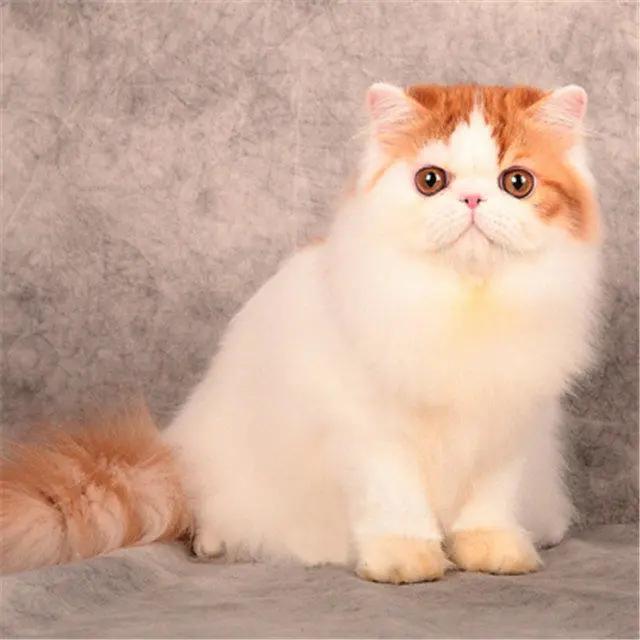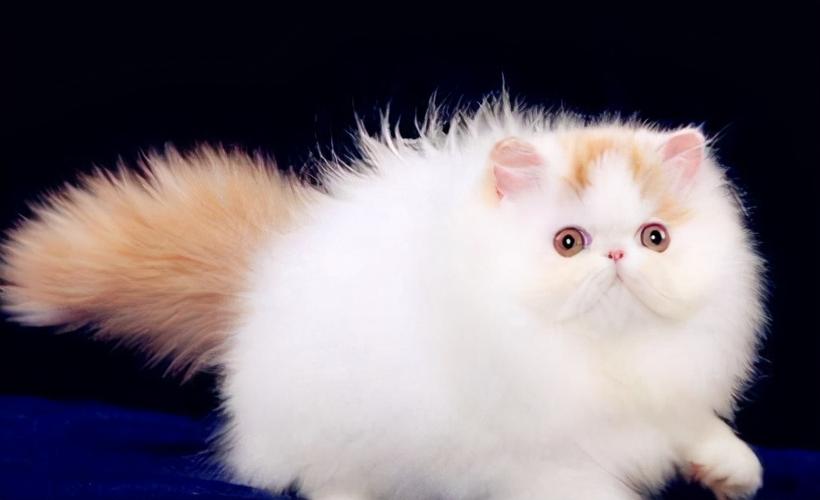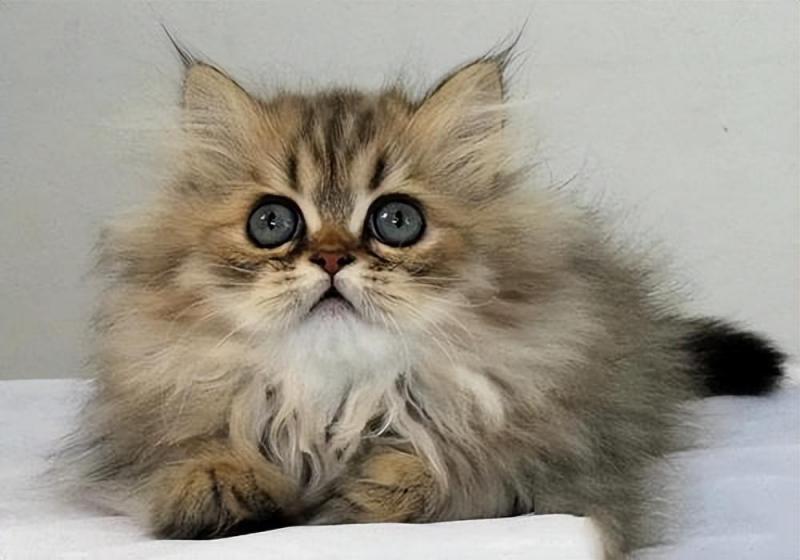
Alias Persian cat, Chinchilla, Bose Mouse, Persian, Felis catus, Persian, Chinchilla, Himalayan, long-haired cat
Family Carnivora Felidae Chordata

Persian cat (scientific name: Persian cat, English name Persian Cat, Persian longhair) is also known as Persian, Chinchilla or Himalayan. It is one of the oldest cat breeds, and one of the most well-known Persian cats is Chinchilla. It has a lifespan of 14-15 years and weighs 3.5-7 kg.
Origin of the breed
Persian cats originated from Khorasan in Persia (today's Iran) and were introduced to Italy. They first appeared in Britain in the 16th century. It is generally believed that the first person to bring Persian cats to Europe was Pietro Della Valle, an Italian traveler. Based on the native long-haired cats of Afghanistan and the Angora long-haired cats of Turkey, after more than 100 years of breeding in Britain, the snow-white fluffy long hair is regarded as a symbol of nobility and a pet of status.
Morphological characteristics
It is known as the "Prince of Cats" and the "Princess of Cats" and has a high ornamental value. It weighs 3.5-5 kg, is 40-50 cm long, has a tail length of 25-30 cm, and is 30 cm high at the shoulder. The body is strong and round, with a pony-like shape, short and strong limbs, and large and round paws. There are 5 toes on the front paws and 4 toes on the back paws, and the toes are close together. The body is medium-sized, with thick bones, strong but not fat. The show-quality Persian cat has extremely long and fluffy hair, relatively short legs, a round head, well-proportioned, plump cheeks, and a domed forehead. The ears are small, round, low-set and wide, with dense hair inside, slightly slanted, and the base of the ears is moderately wide. The eyes are large, round, bright and expressive, and the color is mostly orange, but the eyes of white and other cats can be blue or other colors. The eyes of key color cats are mostly dark blue, and the eyes of gold and silver cats are bright green. The nose is short and wide, with a well-defined shape and does not rise above the lower eyelid. The chin is broad and strong, and the neck is short and strong. The original appearance of the Persian cat was not exactly this, but with time and exhibition, these characteristics have gradually been emphasized by humans, especially in North America. The excessively flat face often causes many health problems, especially respiratory problems. But generally speaking, cat owners now usually choose more appropriate and healthy cats for breeding to reduce respiratory problems in their offspring.
Persian cats have a variety of colors, the most common ones are white, tabby, blue and brown. The cat's tail is short and round, in proportion to the length of the body. The tail is tilted towards the back but not against the back. When walking, the tail does not drag on the ground, and the tail hair is fluffy.
The bottom coat of the Persian cat is white, and the coat is long and soft, fluffy and shiny, covering the whole body. The ear fur is long and curly, and the fur between the toes is longer. The fur is soft like cotton and light like silk. The hair tips are black, silver-gray or golden depending on the color. The hair tips are black and silver-gray, which is the so-called "silver-white chinchilla", and the hair tips are golden, which is "golden chinchilla". The color from the hair tip to the bottom fur gradually turns white.
The fur color is divided into five major color systems, nearly 88 types, including single color system, gradient color system, smoke color system, spotted color system, mixed color system, etc. Red and tortoiseshell colors are relatively rare, so Persian cats with these fur colors are also very precious.

Distribution
Originally from Persia (now Iran), it was introduced to Italy and France after 1620, and then spread in Europe. It was introduced to the United States in the late 19th century and quickly became popular throughout the United States, and then distributed all over the world.
Life characteristics
Persian cats are gentle, responsive, considerate, like quiet and don't like to move, and have a noble and gorgeous temperament. Their voices are delicate and pleasant, and they have strong adaptability to the environment. They are called the aristocrats among cats.
Persian cats are quiet by nature and don't like to make noise. They often like to lie down and sleep quietly, and don't jump up and down, but they don't like to exercise. They are loyal to their owners, easy to communicate, and are qualified companion cats. In the absence of their owners, Persian cats will find something to entertain themselves, and will not destroy everything.
Persian cats' eating habits need to be fixed at regular times and places. They don't like to eat in noisy places or places with strong light, so breeders need to provide Persian cats with a clean and quiet place to eat. In addition, kittens often love to lick their bodies for self-cleaning, which is also part of their daily maintenance. In terms of food, although the origin of Persian cats is not clearly mentioned, according to some information, Persian cats' food includes animal offal, fish, shrimp and grains. For adult cats, food needs to be chopped, while for kittens, food needs to be chewed before feeding. Adult cats need to be fed 3 times a day, with each feeding amount of about 100-200 grams, and attention should be paid to the combination of feed to avoid nutritional imbalance caused by a single food. These characteristics contribute to the health and growth of Persian cats. Reproduction frequency: Male cats are sexually mature at 10-14 months of age, and female cats are 7-12 months of age; they are seasonal estrus animals, usually starting in September each year, with an estrus cycle of 14 days and a duration of 2-4 days; generally one litter is reproduced a year, and Persian cats can give birth to 1 to 2 litters a year. The number of reproductions is related to the physical fitness of the female cat and the recovery after delivery. A strong and well-nourished female cat can give birth three times a year. The female cat is a stimulated ovulator, with a gestation period of about 63 days and 3-5 pups per litter. The life span of a Persian cat is 14-15 years.

Reproduction precautions:
During the pregnancy of Persian cats, breeders need to provide special dietary management, especially in the middle and late stages of pregnancy, and should prepare enough nutritious food for Persian cats, such as lean meat, fish and other protein foods, and appropriately supplement calcium. At the same time, reduce the intake of grain carbohydrates to avoid Persian cats being too fat and causing dystocia.
When mating, purebred cats of the same species should be selected for mating to ensure the purity of the offspring's bloodline. For inexperienced female cats, human help may be needed to secure the female cat to ensure a smooth mating process.
Reproduction management: When Persian cats are approaching the delivery period, breeders should help Persian cats prepare for delivery, including choosing a quiet and comfortable delivery site, and preparing necessary delivery tools such as delivery boxes and scissors. When a Persian cat gives birth, keep quiet and avoid disturbing it to ensure the safety of the mother cat and the fetus. Health and care: Persian cats are not heat-resistant because their hair is dense and long, so special attention should be paid to heatstroke prevention and cooling in hot summer. In winter, attention should be paid to keeping warm. Persian cats need to comb their hair regularly, keep dry and clean to reduce the risk of skin diseases and parasitic infections. They need adequate nutrition and proper exercise to stay healthy. Feeding precautions: Due to the weak digestive function of Persian cats, care should be taken when feeding to avoid gastrointestinal discomfort. It is recommended to choose low-salt, easily digestible cat food and adopt a regular and quantitative feeding method. Persian cats are prone to tear stains and need to clean their eyes regularly to reduce eye secretions and tear stains. In summary, Persian cats are not only loved by people for their unique appearance and docile personality, but also require breeders to pay special attention to their special health and care needs to ensure that they can grow up healthily and become loyal family companions. Disease prevention and control
Persian cats can pass on polycystic kidney disease to their offspring through a single dominant genetic gene. About 36%-49% of Persian cats and related cat breeds worldwide have this disease, which has an extremely high mortality rate. According to research, the prevalence of polycystic kidney disease in Persian cats and related breeds is 36%, while the prevalence of polycystic kidney disease in other breeds is only 4.2%.
The disease can cause cysts in the proximal and distal tubules of the kidneys of Persian cats, and they will increase in size over time, compressing the kidneys and surrounding tissues, leading to renal ischemia, damage to the structure of the kidneys, causing renal cell death, and further reduction in the number of glomeruli. Eventually, it will lead to glomerular sclerosis, tubular atrophy, interstitial fibrosis, etc., causing renal failure. Cats in the late stage of the disease may even develop cysts in the liver, pancreas, and uterus, and often develop hypertension and uremia, causing the death of the affected cats.